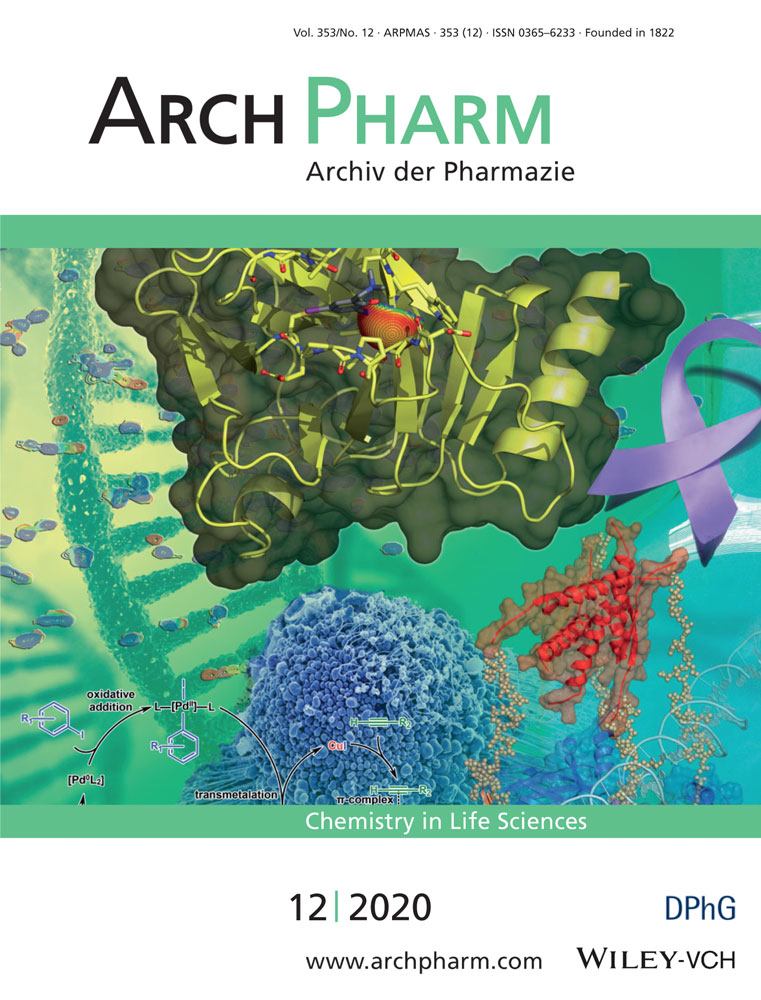Novel 1,2,4-triazole derivatives: Design, synthesis, anticancer evaluation, molecular docking, and pharmacokinetic profiling studies
Abstract
Three novel series of 1,2,4-triazole derivatives were designed and synthesized as potential adenosine A2B receptor antagonists. The design of the new compounds depended on a virtual screening of a previously constructed library of compounds targeting the human adenosine A2B protein. Spectroscopic techniques including 1H nuclear magnetic resonance (NMR) and 13C NMR, and infrared and mass spectroscopy were used to confirm the structures of the synthesized compounds. The in vitro cytotoxicity evaluation was carried out against a human breast adenocarcinoma cell line (MDA-MB-231) using the MTT assay, and the obtained results were compared with doxorubicin as a reference anticancer agent. In addition, in silico studies to propose how the two most active compounds interact with the adenosine A2B receptor as a potential target were performed. Furthermore, a structure–activity relationship analysis was performed, and the pharmacokinetic profile to predict the oral bioavailability and other pharmacokinetic properties was also explained. Four of our designed derivatives showed promising cytotoxic effects against the selected cancer cell line. Compound 15 showed the highest activity with an IC50 value of 3.48 µM. Also, compound 20 revealed an equipotent activity with the reference cytotoxic drug, with an IC50 value of 5.95 µM. The observed IC50 values were consistent with the obtained in silico docking scores. The newly designed compounds revealed promising pharmacokinetic profiles as compared with the reference marketed drug.




